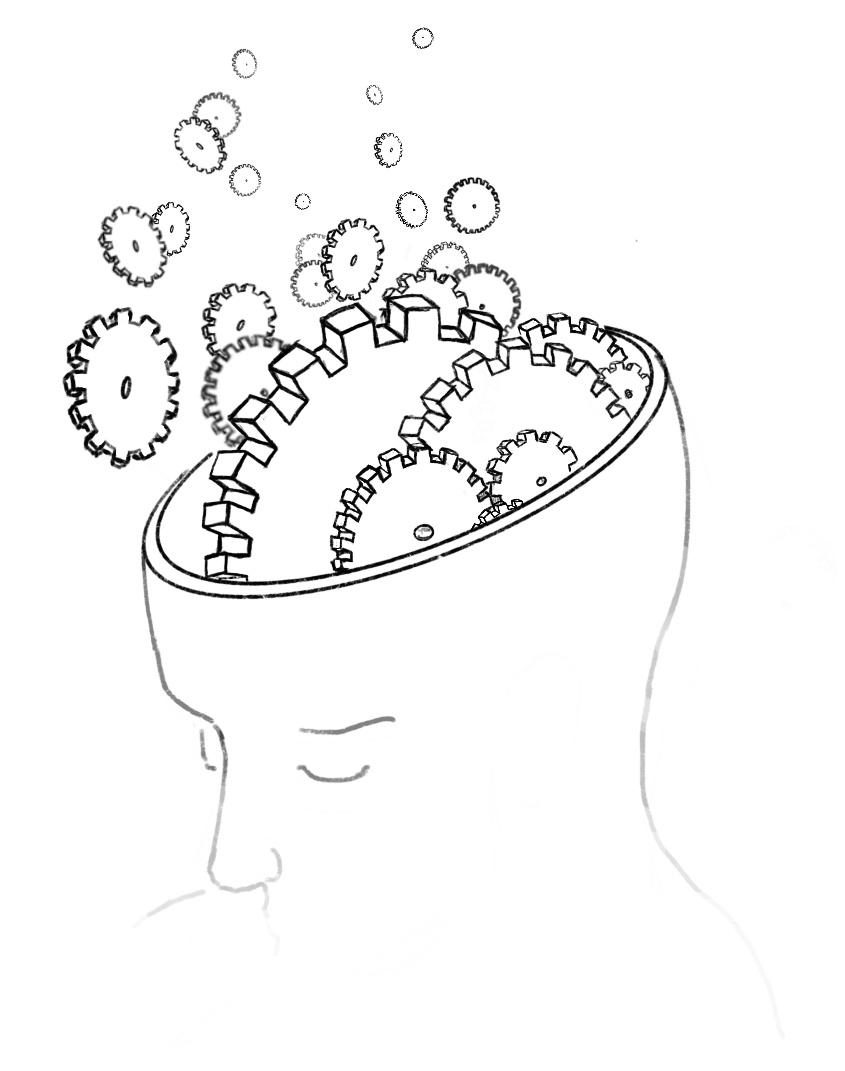Daily, snackable writings to spur changes in thinking.
Building a blueprint for a better brain by tinkering with the code.
subscribe
rss Feeds
SPIN CHESS
A Chess app from Tinkered Thinking featuring a variant of chess that bridges all skill levels!
REPAUSE
A meditation app is forthcoming. Stay Tuned.
MEDITATION DRAFT SESSION 11: REFLECTION OF THOUGHT
January 30th, 2023

On Monday Tinkered Thinking releases a draft of a lesson from the forthcoming meditation app, currently called The Tinkered Mind (If you can think of a better name, please reach out. I'm not crazy about the current one, but I'll be damned if I let an imperfect name keep me from developing a good idea.) The rationale here is simply to stave off project stagnation by taking a wish to work with words on a daily basis (Tinkered Thinking Posts) and combine it with adjacent projects. This also gives regular readers a chance to get a preview of what I'm cooking up and to get feedback before the app launches, which is a tactic that has proved extremely useful with other projects unrelated to Tinkered Thinking.
One further introductory note: The goal of this meditation app is predominantly aimed at helping individuals build a robust daily habit by breaking that habit down and tackling it's consitituent parts one at a time and aiding the process with a new and innovative way of tracking progress, the likes of which has not been seen in other meditation apps or habit tracking apps.
Again, if you have any feedback, please reach out via Twitter
Session 11: Reflection of Thought
Take a moment to sit, arrange your posture, and take a few deep breaths with long exhales.
<18 seconds of Silence (3 full breathes + exhales with half-second counts>
Now transition to coherence breathing with inhales and exhales of the same length.
Now take a moment to do a body scan in complete silence. Remember the sheet of light suspended above you, and allow your attention to pour slowly over your entire body as that sheet of light descends over you.
<30 seconds of Silence>
Slowly expand your attention from the internal sensations of your body to include sounds around you. Try to separate the sounds from the things you think are causing them. Try to accept these sounds as events that are happening not somewhere else where it seems the sound is coming from, but an event that is occurring in your mind. Whatever is causing these sounds, those events happened slightly before you heard them. There’s a delay, though we usually can’t tell unless the event is very far away as is often the case with thunder and lightning. We see the lightning and a moment later we hear it. So try to separate whatever you hear from it’s source. Think of these sounds like thoughts. They just appear, and if we turn our attention to this part of our experience we can hear more sounds than we were conscious of.
<wait 10 seconds>
Bring attention to any thoughts that are arising. Remember we aren’t trying to eradicate thoughts, or avoid them, but simply notice them.
<wait 10 seconds>
Again it can be useful to use the breath as an object of attention. Try to notice when the mind becomes distracted and attention has wandered away from the breath. Allow your attention to put a spotlight on the thought that is occurring when you realize that you are no longer paying attention to the breath.
<wait 20 seconds>
This sort of practice can begin to feel a bit like a game of whack-a-mole. If you can barely pay attention to a breath or two before the mind wanders off like a distracted child, don’t worry, this is completely normal. Many refer to this as the Monkey Mind. And some meditation sessions will feel like complete failures where not a single moment seemed to have peace or control or any properly placed attention. That is ok, and it’s something that we should expect. A terrible session of meditation is still better than not meditating because at the very least, it helps engrain our habit of taking this time, sitting, breathing, and trying to train the mind.
So again, place the attention on the sensation of the breath if it’s helpful and simply try to maintain a vigilance for when the mind has wandered.
<wait 20 seconds>
Pause for a moment and consider what exactly is happening when you notice a thought that you’re having. When you notice a thought, is the act of noticing a kind of new thought? Can thought observe itself?
Another way of approaching this is to ask: what kind of relationship do you have with your thoughts? Is it a good relationship? What does it mean to have a bad relationship with one’s own thoughts?
Try to heighten your curiosity about this idea for a moment while you observe your thoughts for another minute. What does it feel like to notice a thought that’s filled your mind?
<30 seconds of silence>
Are you still present? Or are you lost in thought? Try think about what the thought was, in vivid detail, and notice how it evaporates once you’ve given it that attention.
<30 seconds of silence>
How did you do this time? If it seems like you’re having more thoughts as we engage with longer stretches of silence, it’s not because you’re getting worse at this, it’s that you are getting better at noticing what’s been there all along. And this is the first step in training the mind - noticing, recognizing what’s actually there - the never ending stream that’s always been there.
As we move toward the end of the session, allow your breathing to transition into deeper inhales and longer exhales. And as you feel the relaxation that comes with these breaths, try to notice any thoughts that try to snag a bit of the mind’s attention.
<15 seconds of silence>
-compressed.jpg)





